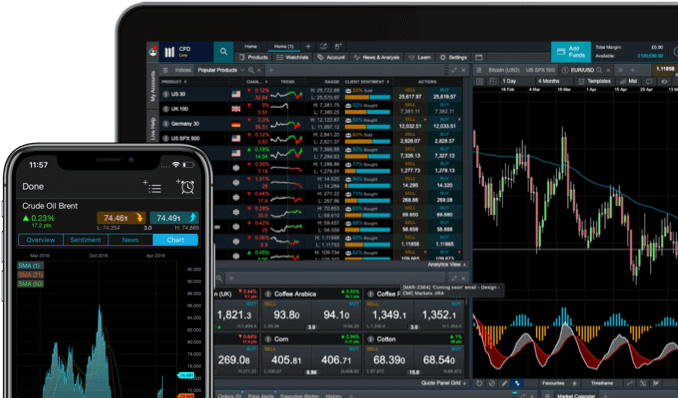Pattern recognition software is designed to identify a number of significant trading patterns that are popular within financial markets. It is most popular with volatile markets where traders are required to pay close attention to price charts, in case of sudden price movements. Among these are forex and share markets. Our chart pattern scanner acts as the following:
Chart pattern screener
Pattern recognition is very important when it comes to technical analysis in trading. Price charts display a multitude of data that can be difficult to interpret on your own without pattern recognition software, meaning that you may miss entry or exit points in a trade, or ignore the potential opportunity completely. This is where our chart pattern scanner on the Next Generation trading platform is useful.
An important part of technical analysis is to understand the price action of an asset in a rising or falling trend, as price movements usually signal a new trend. Based on these trading signals, traders can then decide whether to enter, exit or avoid a trade, depending on how promising the trade looks. Trading patterns can also help with where to place stop-loss orders and set profit targets.
What is pattern recognition software?
Different types of pattern recognition
- Wedge, channel or triangle pattern scanner
- Head and shoulders pattern scanner
- Forex pattern scanner
- Double bottom or top pattern scanner
- Harmonic patterns scanner
- Stock pattern screener
- Cup and handle pattern scanner
Learn to trade with our chart pattern screener
We have put together a comprehensive video below on how to assemble and trade using our chart pattern recognition scanner. This explores the type of pattern you can trade, along with assets and the timeframe for the chart.
Free candlestick pattern scanner
Trading patterns are most commonly displayed on candlestick charts, although we offer a variety of chart types, such as line graphs, bar graphs and Renko charts. This allows you to display your data in the clearest way possible that makes it easier for you to understand.
- Open a trading account to make the most of our free candlestick pattern scanner.
FAQS
Are chart patterns reliable?
Chart patterns are reliable in terms of showing past price movements and helping to detect the potential future direction of an asset. However, they should not be exclusively relied on and traders often combine multiple elements of technical analysis to carry out a more thorough inspection of the data. Try trading with the candlestick pattern scanner by signing up for an account.
What are bullish patterns?
Bullish patterns usually form after a downtrend in the market to signal a price reversal, meaning that an instrument’s price is starting to increase. Investors may then want to take a long position if they think it will continue. Learn more about bullish and bearish markets.
How do you find the pattern of a chart?
On our Next Generation trading platform, you can find the pattern of a chart both manually and automatically. Either open a specific instrument’s chart and apply manual pattern recognition analysis or select the pattern that you would like to view from a list of instruments where it has automatically been detected. Learn how to spot trading patterns.
What are the different types of chart patterns?
There are a wide range of trading chart patterns. Examples of simple patterns are triangles, wedges and diamonds, whereas head and shoulders, cup and handle and double tops/bottoms are more complex. Learn from our complete stock chart pattern guide.
What patterns do day traders look for?
Most short-term traders look for similar patterns when trading the financial markets. Day traders may look for breakouts and reversals in patterns that form quickly, such as doji candles, head and shoulders and engulfing candlesticks. Learn about more pattern types.

